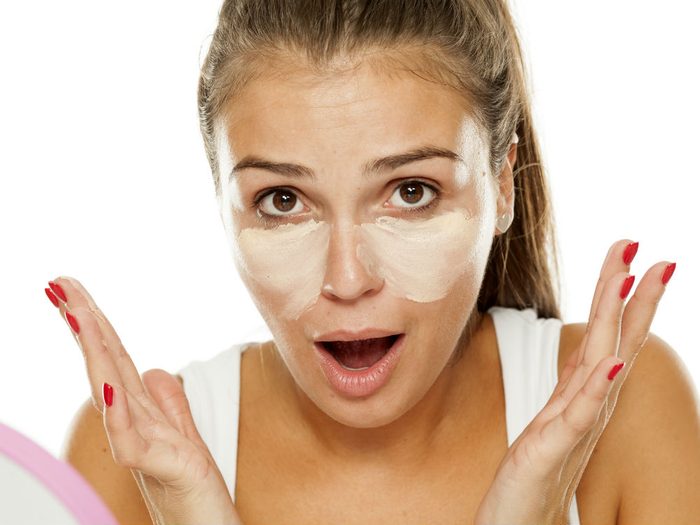
Are you using concealer properly?
Since colour correctors come in all kinds of varieties (liquids, powders, creams) and in countless shades (pastel yellows, chiffon, brick reds, peach, lavenders, blues, and greens) mastering the technique can seem daunting at first. But what exactly is it and why is it useful for you to learn how to properly pick up the skill?
“Colour correcting means canceling a darker skin tone pigment like dark circles, sun spots, acne scars by using a coloured concealer,” explains Sebastien Tardiff, co-founder and CEO of Veil Cosmetics. “As a general rule, a golden or yellow corrector is best for canceling out sallow, olive, and brown undertones, while a pink or peachy corrector works great for canceling out any signs of blue, purple, and red marks.”
Your colour correcting beauty routine will be exclusively unique to your own skin’s needs, so don’t compare your routine with your friend’s.
Joe Fresh Colour Correcting Crayons in Green, Yellow and Lavendar, $6 each at Shoppers Drug Mart locations.
Say buh-by to dark spots and tired eyes with these makeup, spa and derm services.
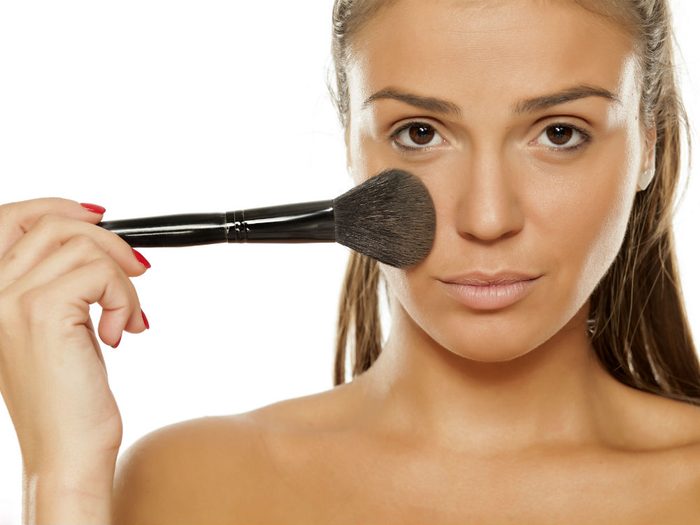
Colour correcting only with bright colours
Sure, half the fun of colour correcting is getting to use fun colours like blue, purple, and green but you can also colour correct with traditional concealers colours with different undertones to get huge results.
To find and use the right concealer properly, “choose a corrector that is a full shade darker than your skin tone,” says Tardiff. “For example, if you have a porcelain complexion, choose a light corrector. If you have a medium complexion, use a tan one.” Although you might be used to tackling your under eye circles with a light concealer, canceling out your dark under eye circles first will prevent that grayish murky look that can make you look twice as tired.
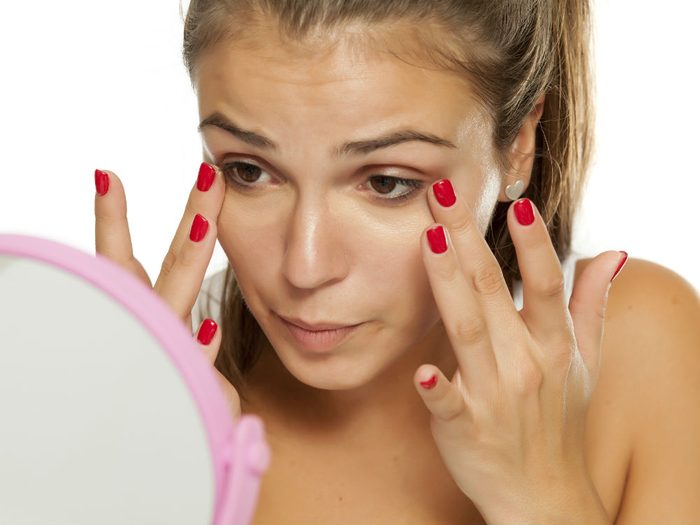
Forgetting to blend and highlight
“To bring back the corrected area to the same skin tone as the rest of the complexion, reach for a highlighter of the same undertone as the corrector to lift and brighten the area,” suggests Tardiff. “The highlighter needs to be a full shade brighter than your actual skin tone. Apply a sheer layer of highlighter all over the corrected area, then dab dry. Repeat and layer until the corrected area smoothly blends with the rest of the complexion.” (Here are nine easy ways to achieve flawless skin, by the way.)
Urban Decay Liquid Illuminating Mix-In, $39 at sephora.ca.
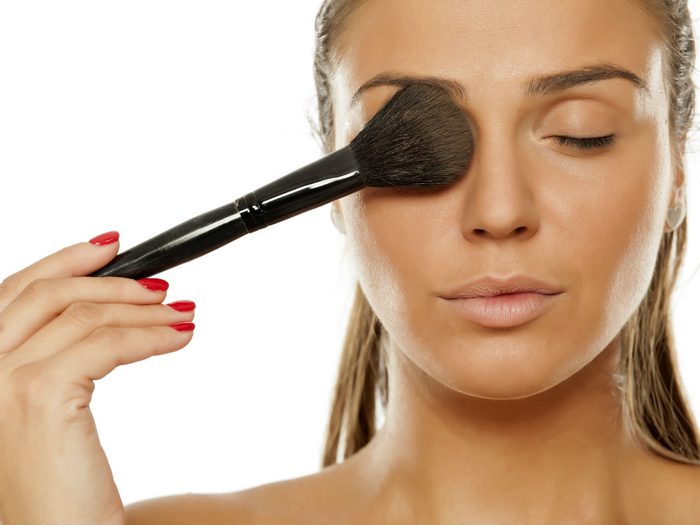
You picked up a random brush
When you’re colour correcting, a natural finish will make your skin look flawless, so you want to avoid streaks and dreaded cakiness caused by using the wrong makeup brush. Using clean fingers is fine as you’ll be able to really blend the corrector into your skin, but a small concealer brush will also help you concentrate on specific areas on your face—you don’t want to use a large foundation brush as this will smudge away all your previous work.
While we are on the topic of brushes, this is how often you should wash them.
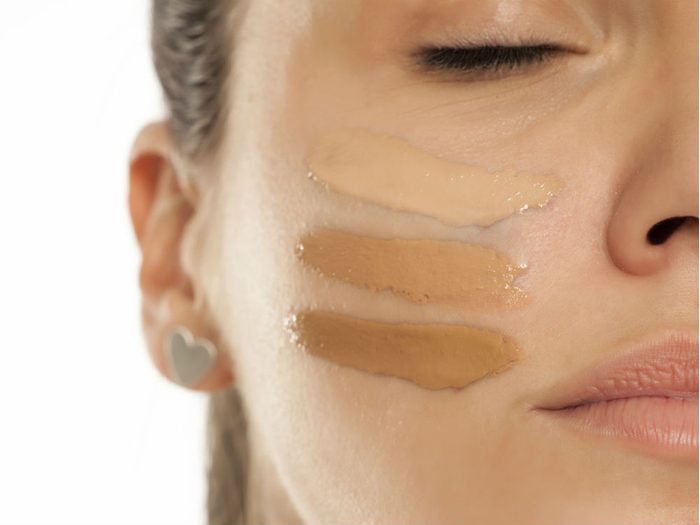
You avoid experimenting
From soft pastel tones to bright colours, there are so many colour correcting options for you to experiment with – and you’ll have to play around with different shades of colour correcting colours (like red, blue, pink, peach, yellow, and brick) to see what undertones work best for you.
The Stila Color Correcting Palette, $59 at sephora.ca.
Also, have you heard about Rihanna’s Fenty Beauty line and its wide range of colours?
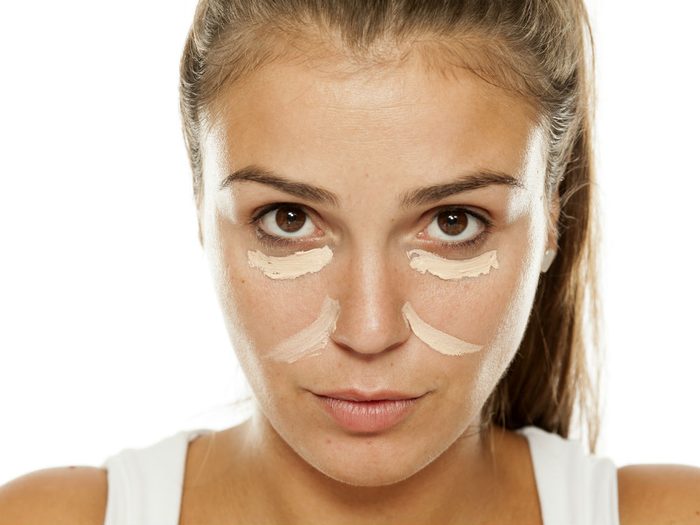
You use one colour for everything
When correcting discolorations and acne marks it’s important to give each section of your face the attention it deserves. What colour corrects dark circles (a yellow to a peachy tone), won’t mask the redness caused by Rosacea (when a green tone would work). Battling acne? These blemish-fighting tips will do the trick.
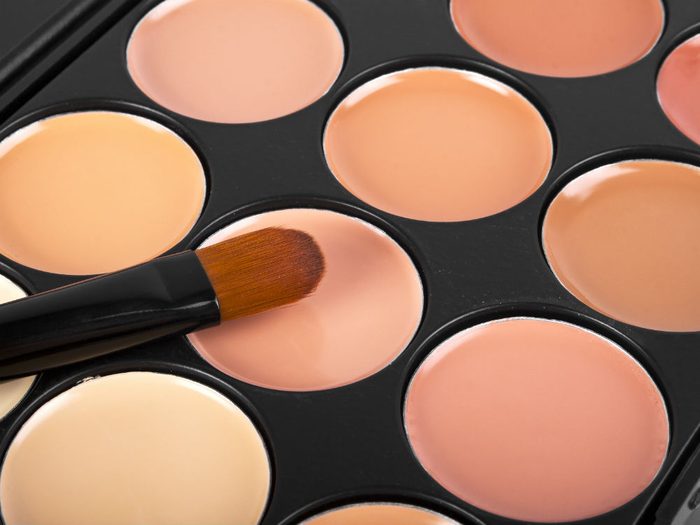
You use the wrong shades for your skin tone
Colour correcting is definitely not a one-size-fits-all type of technique. Different concealer shades have been designed to work properly on light, medium, tan, dark, and deep skin tones. If you have a tan, dark or deep skin tone, you’ll want to use a red instead of a peachy shade to cancel out dark circles and a yellow shade for masking redness and dark spots on lighter skin. While you’re at it, you’ll want to find the right lipstick colour for your skin tone.
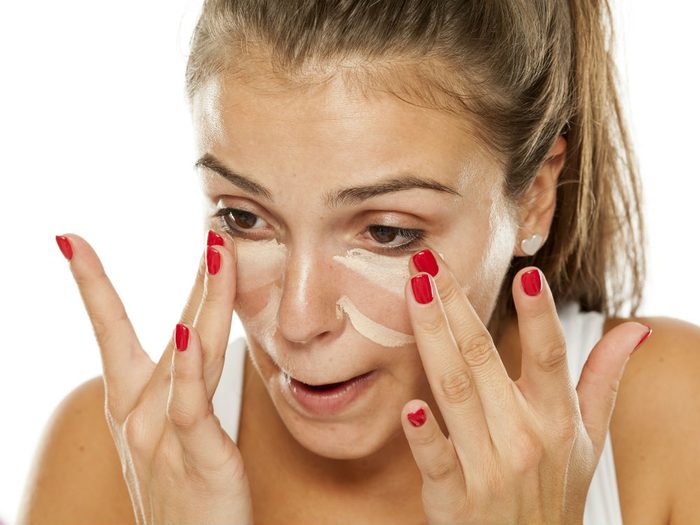
You’re applying it to the wrong places
“Use the colour correcting concealer where you would use concealer,” shares Shara Strand, a New York City-based makeup artist and owner of the mineral-based makeup brand Shara Cosmetics. “The most common areas would be down the bridge of the nose, under the eyes, and above the brows.” Strand also recommends avoiding colour correcting near your cheekbones if you plan on contouring as you’ll want to focus on building definition in that area. Click here to find out which makeup tricks help you fake a good night’s sleep.
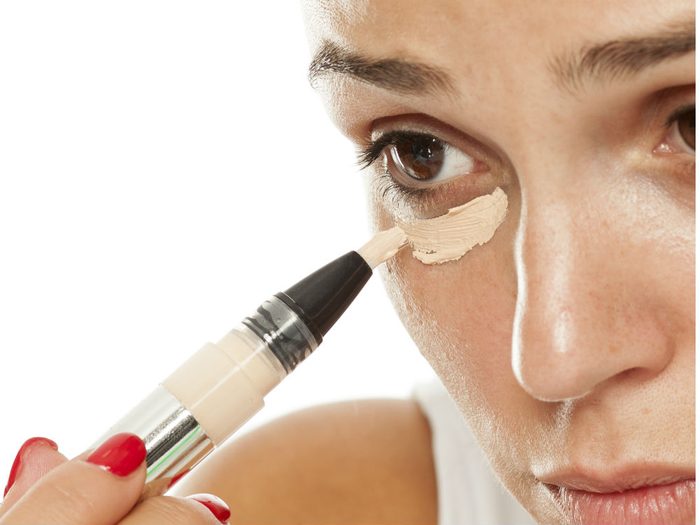
Using too much product
Just like eyeshadow and contour, you’ll want to add in colour correcting products gradually rather than adding a large amount of product at once. “Use a little bit at a time while blending it out,” Strand advises. “Then slowly build up your coverage.” You’ll be surprised at how a little bit of product goes a long way.
Another big mistake: Wearing expired makeup. Find out what it does to your skin.
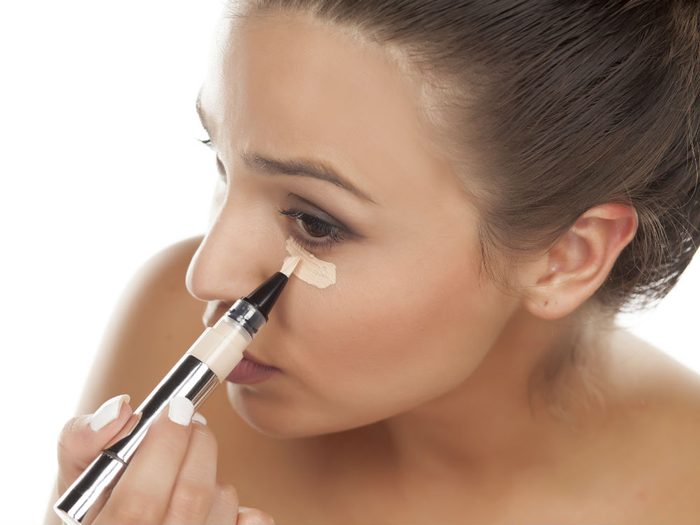
Applying colour corrector after concealer
Colour correctors aren’t a finishing touch to your makeup look, they should be used as a building block from the very moment you apply concealer properly. “Colour corrector should be used before concealers, so that they look more natural when blended into the base makeup.” explains Strand. Applying colour corrector before concealer will also allow you to mix the corrector with your usual concealer properly so that you use only the amount you need.
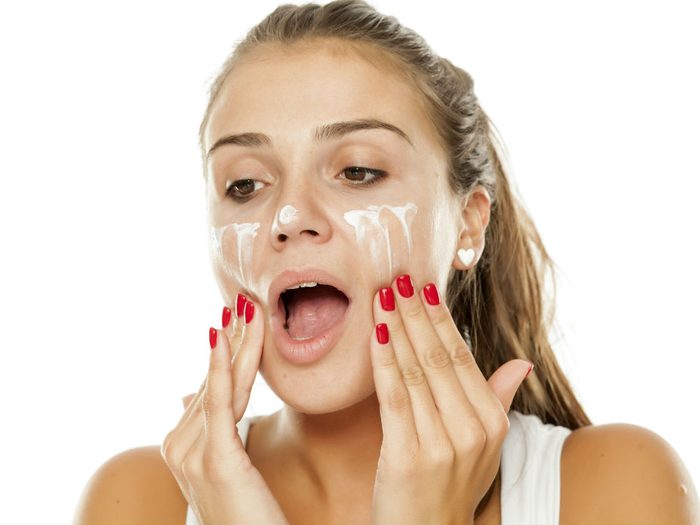
You didn’t prep your skin
Maggie Esmond, a makeup artist at Makeup by Shara who specializes in airbrush and SFX makeup recommends giving the sensitive area around your eyes a little TLC before going in with your makeup. She suggests using a gentle eye cream like the Clinical Peptoxyl Eye Treatment to ease puffiness and hydrate your skin so that your concealer properly applies seamlessly. Avoid using an eye cream with retinoids as it can be too drying underneath your makeup.
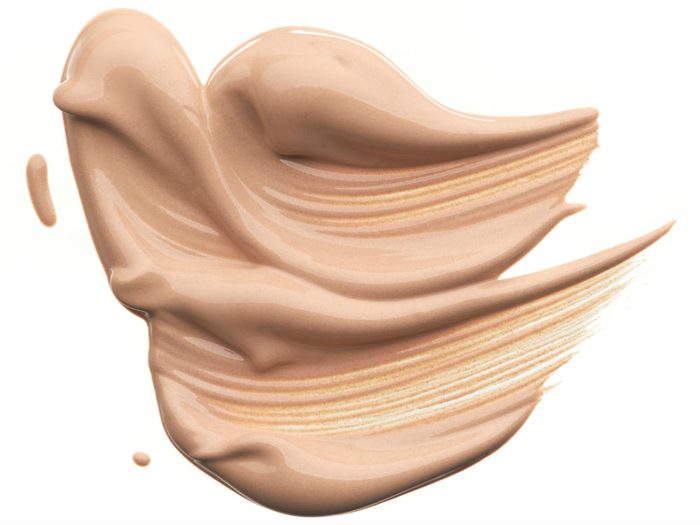
Not choosing the correct formula
Depending on your skin type, you’ll stock your makeup bag with creamy, liquids, and powder versions of your favorite concealers and foundations. (Do you really need foundation? Find out here.)
When it comes to colour-correcting though, Esmond strongly recommends sticking to a cream based concealer rather than a liquid-based one. Liquid corrector can appear very noticeable on the skin if not properly blended before drying and a creamy texture is easier to blend and dab into the skin.
Color FX Corrector Correct Clicks, $24 at sephora.ca.
